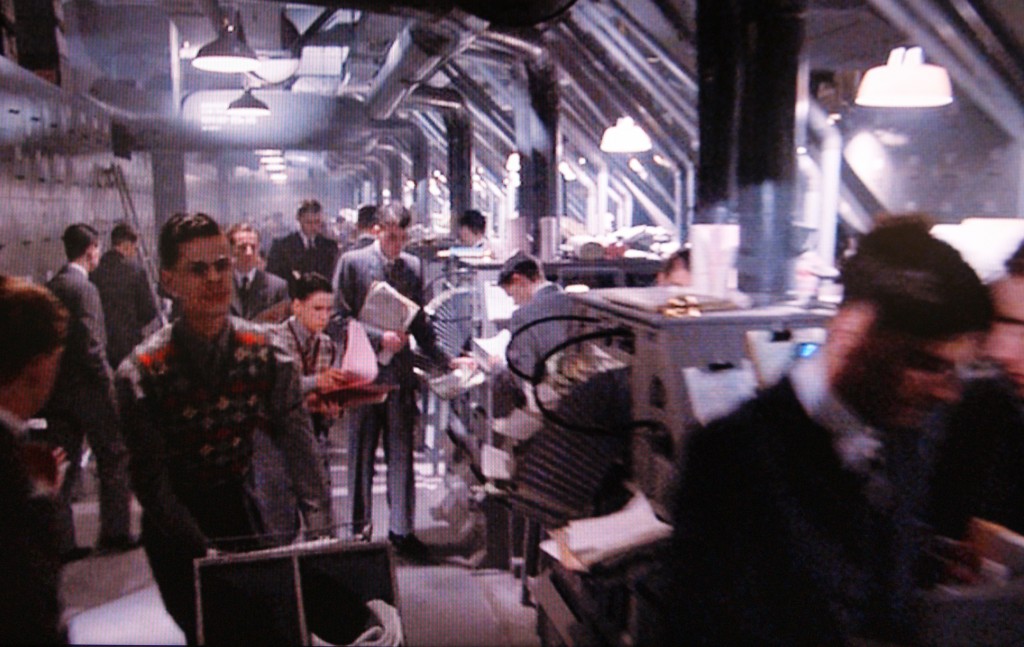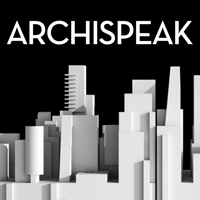Late Nights
I hate working in the office. I never seem to get nearly as much done in the office during daylight hours as I do when no one is around. You will almost never find me working late at the office or coming in early, and the times I’m in the office on the weekend probably coincide with the solar eclipse. Now, don’t let that fool you into thinking I don’t martyr myself for the architectural cause with the best of them, I just don’t do it in the office. I seriously love some of my coworkers as if they were family, but nevertheless, when I need to get things done I much prefer isolation and in this age of technology, with smartphones, VPN connections, and remote desktops, I frankly see spending any time in the office outside of normal working hours cumbersome.
What prompted this thought was a rather late night I had recently in preparation for a schematic design package. As often happens, especially in times like these where work outstrips manpower, we are all over-committed with our projects and you just can’t get away from burning the midnight oil from time to time. For me, the presentation eve ‘late night’ is a ritual that centers around one consistent aspect: movies.
Having them on while I work doesn’t constitute “watching” in the traditional sense, and is far more a white noise that keeps me on track. I thought it curious, so I’m noting it here.
Is this architecturally relevant? Not in the least.
1. Brazil
The film centers on Sam Lowry, a man trying to find a woman who appears in his dreams while he is working in a mind-numbing job and living a life in a small apartment, set in a dystopian world in which there is an over-reliance on poorly maintained (and rather whimsical) machines. Brazil’s bureaucratic, totalitarian government is reminiscent of the government depicted in George Orwell’s Nineteen Eighty-Four, except that it has a buffoonish, slapstick quality and lacks a Big Brother figure. (via Wikipedia)

Aside from being the brainchild of brilliantly disturbed Terry Gilliam, and far and away my favorite movie of his, Brazil is an amazing cacophony of techno-architectural machines, textures and spaces. A visual assault, Brazil does for the eye what the Kronos Quartet does for the ear, but in a satirical and over-the-top manner that reinforces the absurdity of a dystpian society that functions like a broken machine.

Everything about this world is miserable, from the ducts that penetrate intrusively through every indoor space, to the grating ring tone of the phone and it’s absurdly complicated switch-board operation. Fundamentally the aesthetics of the movie symbolize everything anti-architectural and through that I think I derive some ease while watching.There is virtually nothing to like about this world, architecturally or otherwise, but even through the visual agony, there are some amazing moments. Whatever I do has to be better than that.
 I love how “computers” are really more of these very cumbersome steampunk-esque typwriters with a tiny monitor whose display is enlarged via a magnifier. Lowry’s office is a morphologically abhorrent space, excruciatingly and improportionately tall and narrow, where he fights with his neighbor over their a single common desk penetrating through the wall.
I love how “computers” are really more of these very cumbersome steampunk-esque typwriters with a tiny monitor whose display is enlarged via a magnifier. Lowry’s office is a morphologically abhorrent space, excruciatingly and improportionately tall and narrow, where he fights with his neighbor over their a single common desk penetrating through the wall.
The notion of these “living” buildings composed of removable panels and filled with hoses and utilities found a constant theme through my school work. Something about it fit well with the deconstructivist attitude of the day. Half my designs glommed on to these ideas and reinterpreted the pop art anachronisms of Archigram, or the infinite industrial flexibilities of Cedric Price. Brazil fermented a ripe breeding ground of utopian machinations at the time. Reading 1984 and A Brave New World in conjunction with the writings of Herbert Spencer and Jacques Derrida probably didn’t help either.
Horribly, absurdly, wonderful, and I watch it every time. After all, we’re all in this together.
2. The Fifth Element
“Mostly set during the twenty-third century, the film’s central plot involves the survival of humanity which becomes the duty of a taxicab driver (and former special forces major) named Korben Dallas (Willis) when a young woman (Jovovich) falls into his taxicab. Upon learning of her significance, Dallas must join efforts with the girl and a priest (Holm) to recover four mystical stones which are the key to defending Earth from an impending attack of pure evil and destruction.” (via Wikipedia)
 The Fifth Element is a profoundly architectural film, with an amazing design element riddled throughout. When I first moved to Dallas, the AIA convention came to town and I went to a few seminars. Of them the only one I remember dealt with alternate careers for people with architectural degrees. At the time I was already a little disillusioned with the profession, so the topic got me in the door. The first presenter was a woman who worked as a park ranger with maintenance responsibilities for build structures throughout the National Park system. She had an excellent slide show but what about what you’d expect. The second presenter what a man who could have rivaled a banker in his 3-piece suit, and as he wheeled out an overhead projector (for you kids out there, here’s a little history lesson click here) and produced his clear sheets, we suddenly understood that he was advocating architects taking a purely construction management path. That didn’t exactly charm the masses. The third presenter, however, proceeded to dim the lights of the auditorium in order that he could show us a video of his demo reel. The presenter was Eric Hanson, an architect who had taken his trade to Hollywood as a visual effect artist. Believe it or not, he kind of stole the show, and one of the features of his demo reel was the work he did on The Fifth Element which included all of the modeling of the architecture of the future New York City.
The Fifth Element is a profoundly architectural film, with an amazing design element riddled throughout. When I first moved to Dallas, the AIA convention came to town and I went to a few seminars. Of them the only one I remember dealt with alternate careers for people with architectural degrees. At the time I was already a little disillusioned with the profession, so the topic got me in the door. The first presenter was a woman who worked as a park ranger with maintenance responsibilities for build structures throughout the National Park system. She had an excellent slide show but what about what you’d expect. The second presenter what a man who could have rivaled a banker in his 3-piece suit, and as he wheeled out an overhead projector (for you kids out there, here’s a little history lesson click here) and produced his clear sheets, we suddenly understood that he was advocating architects taking a purely construction management path. That didn’t exactly charm the masses. The third presenter, however, proceeded to dim the lights of the auditorium in order that he could show us a video of his demo reel. The presenter was Eric Hanson, an architect who had taken his trade to Hollywood as a visual effect artist. Believe it or not, he kind of stole the show, and one of the features of his demo reel was the work he did on The Fifth Element which included all of the modeling of the architecture of the future New York City.
It wasn’t that Eric’s work was particularly groundbreaking…far from it. He actually crafted and rather bleak and derivative future metropolitan reality. Not every future creation is going to be a Jean Nouvel pure form or a Libeskind collision. We’re certainly destined for a few brownstone eclectics and Philip Johnson postmodern revivalists. But it did make me seriously question if I wanted to remain in the profession at all.
 Maybe it was knowing that an actual architect had designed the visuals that turned me onto the movie so strongly from the beginning, but in any event, there’s something about the movie that is just perfect to watch again and again. The movie begins in a future New York whose buildings are immeasurably taller and traffic is stacked through a myriad of successive layers. The topology is a cacophony of styles and interpretations, stretched ever higher and higher. While the computer graphics are a little strained compared to modern sensibilities, I think it holds up fairly well.
Maybe it was knowing that an actual architect had designed the visuals that turned me onto the movie so strongly from the beginning, but in any event, there’s something about the movie that is just perfect to watch again and again. The movie begins in a future New York whose buildings are immeasurably taller and traffic is stacked through a myriad of successive layers. The topology is a cacophony of styles and interpretations, stretched ever higher and higher. While the computer graphics are a little strained compared to modern sensibilities, I think it holds up fairly well.
A favorite of mine is a quick vision of this future New York from afar as the transport ship launches from the spaceport, revealing a landscape where the Atlantic ocean has receded to a point that Manhattan is no longer an island but a prominent outcropping upon which a higher city is constructed above a lower city. Even the Statue of Liberty ends up towering impossibly far into the air upon its exposed base.
The entire movie is a visual carnival ride with a well timed soundtrack that works really well and helps carry you through smoothly, which is fun to work to. Every time the movie comes on my wife just cringes…that’s when you know its good.
 3. The Rocky Horror Picture Show
3. The Rocky Horror Picture Show
“1975 film adaptation of the British classic rock musical stageplay, The Rocky Horror Show, written by Richard O’Brien. The film is a parody of science fiction and B-movie horror films. Director Jim Sharman collaborated on the screenplay with O’Brien, who wrote both the book and lyrics for the stage. The film introduces Tim Curry and features Susan Sarandon and Barry Bostwick along with cast members from the original Kings Road production presented at the Royal Court Theatre, London, in 1973. In its day it was a highly provocative, though comedic, portrayal of gay and transgender culture, a symbol of LGBT themes, and a review of sexual quirks.” (via Wikipedia)
Blah, blah blah with the explanation…who doesn’t love a little Rocky, right? I usually fire this one up past the 2am threshold when the Mountain Dew sugar/caffeine double punch is wearing off. Typically I hate musicals, and by “hate” I mean “where did we put that handgun?” but not Rocky. What is there really to say about this flick that hasn’t been said? It’s a bawdy, cheeky, over the top thrill ride that that has very little direction and makes even less sense. But the same can be said of detailing elevations up until the crack of dawn.
Rocky is an excellent combination of humor and an upbeat soundtrack that helps keep the lids open, and the mind focused. Well…focused enough. It’s the saltine that cleanses my artistic palette and allows me to finally sleep.
For an hour or two, anyway.








